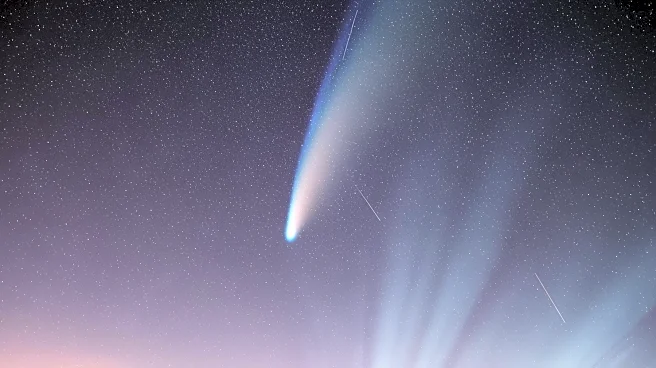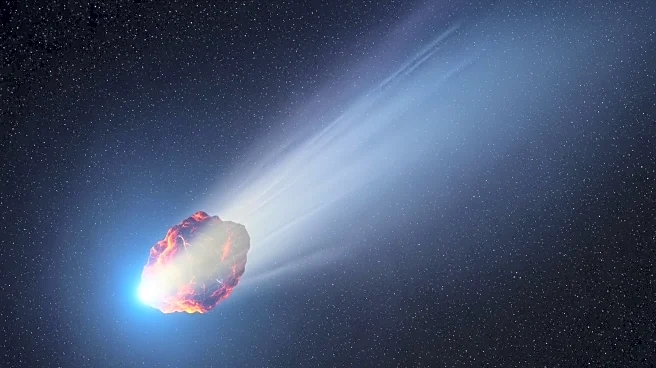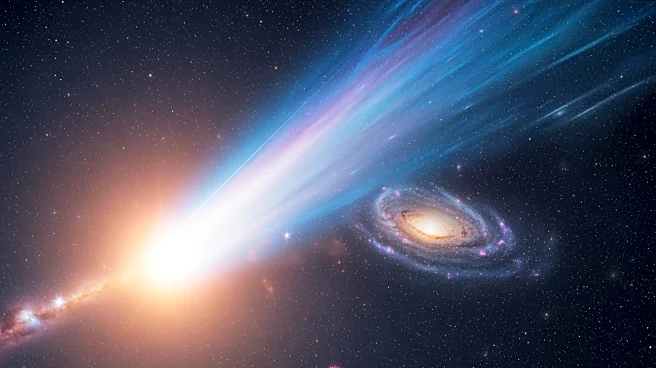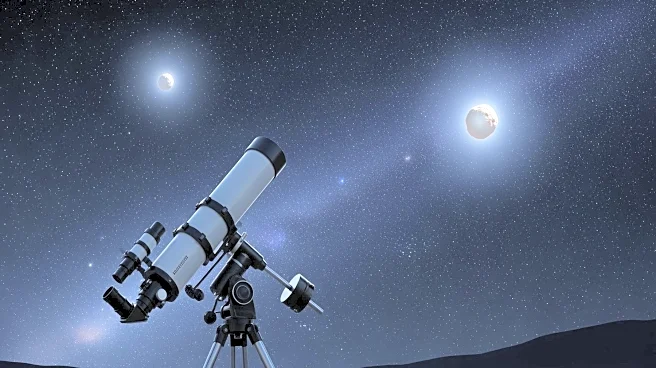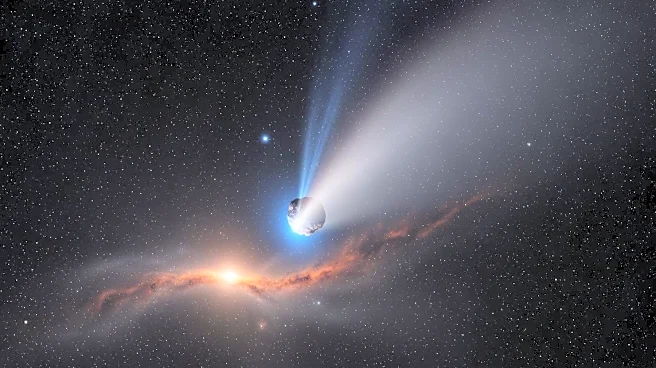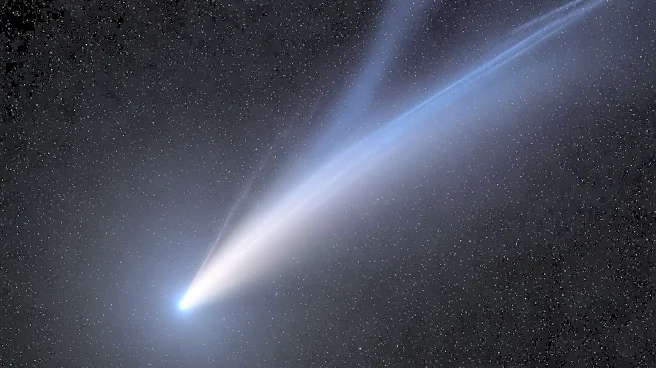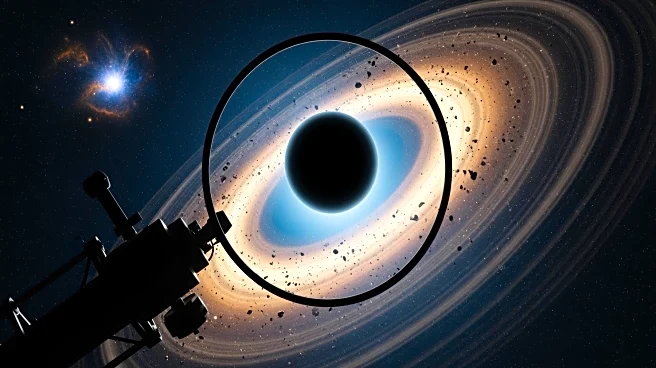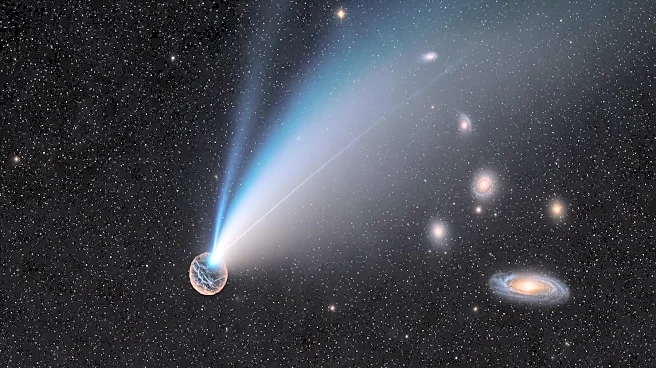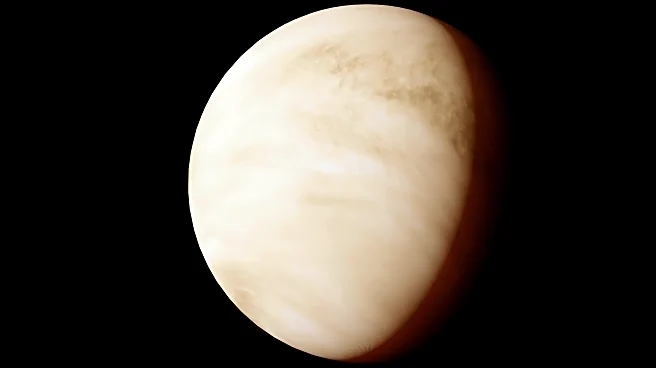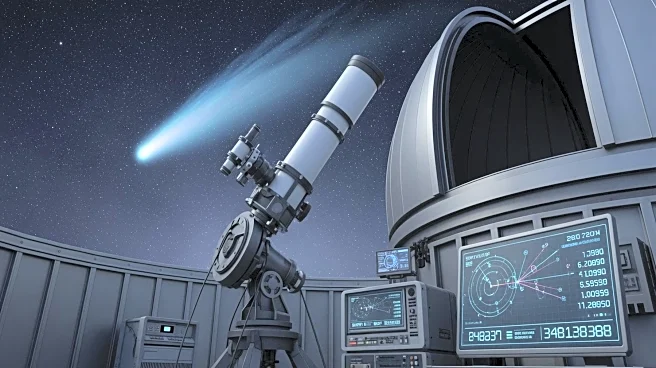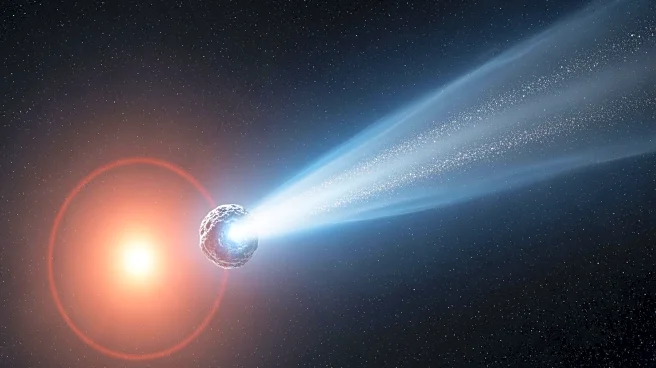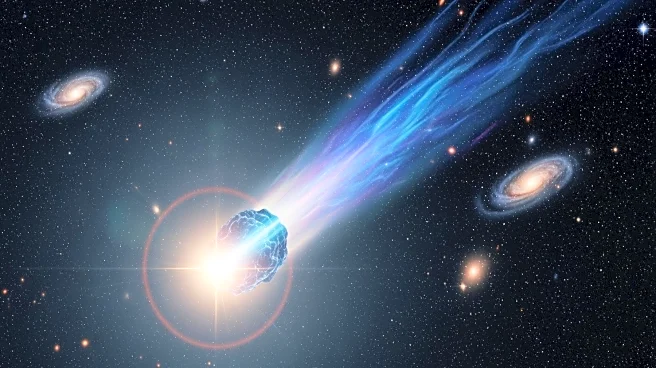What's Happening?
Comet 3I/ATLAS, an interstellar comet discovered in July 2025, is making its closest approach to the Sun. While not visible to the naked eye, it can be observed with telescopes in California during the early morning hours. The comet is currently around
magnitude 12.1, requiring an 8-inch aperture telescope for visual observation. Ideal viewing locations include dark-sky areas such as Joshua Tree National Park and Mount Shasta. Despite viral claims of alien origins, NASA confirms the comet is a natural phenomenon, offering a unique opportunity for scientific study.
Why It's Important?
The appearance of Comet 3I/ATLAS provides a rare chance for astronomers and enthusiasts to observe an interstellar object, contributing to the understanding of cometary behavior and composition. The event highlights the importance of dark-sky preservation for astronomical observations and encourages public interest in space science. It also serves as a reminder of the need for scientific literacy in distinguishing between evidence-based research and speculative theories.
What's Next?
As Comet 3I/ATLAS continues its journey, astronomers will focus on studying its chemical composition and trajectory. The comet's approach to Venus and Jupiter will offer further observation opportunities. Public interest may lead to increased participation in astronomy events and discussions on interstellar phenomena. Scientists will continue to monitor the comet's behavior, potentially uncovering new insights into the nature of interstellar objects.
Beyond the Headlines
The public fascination with Comet 3I/ATLAS reflects broader cultural interest in space exploration and the possibility of extraterrestrial life. The event underscores the role of scientific institutions in providing accurate information and combating misinformation. It may influence future public engagement with astronomy and the prioritization of space research funding.
